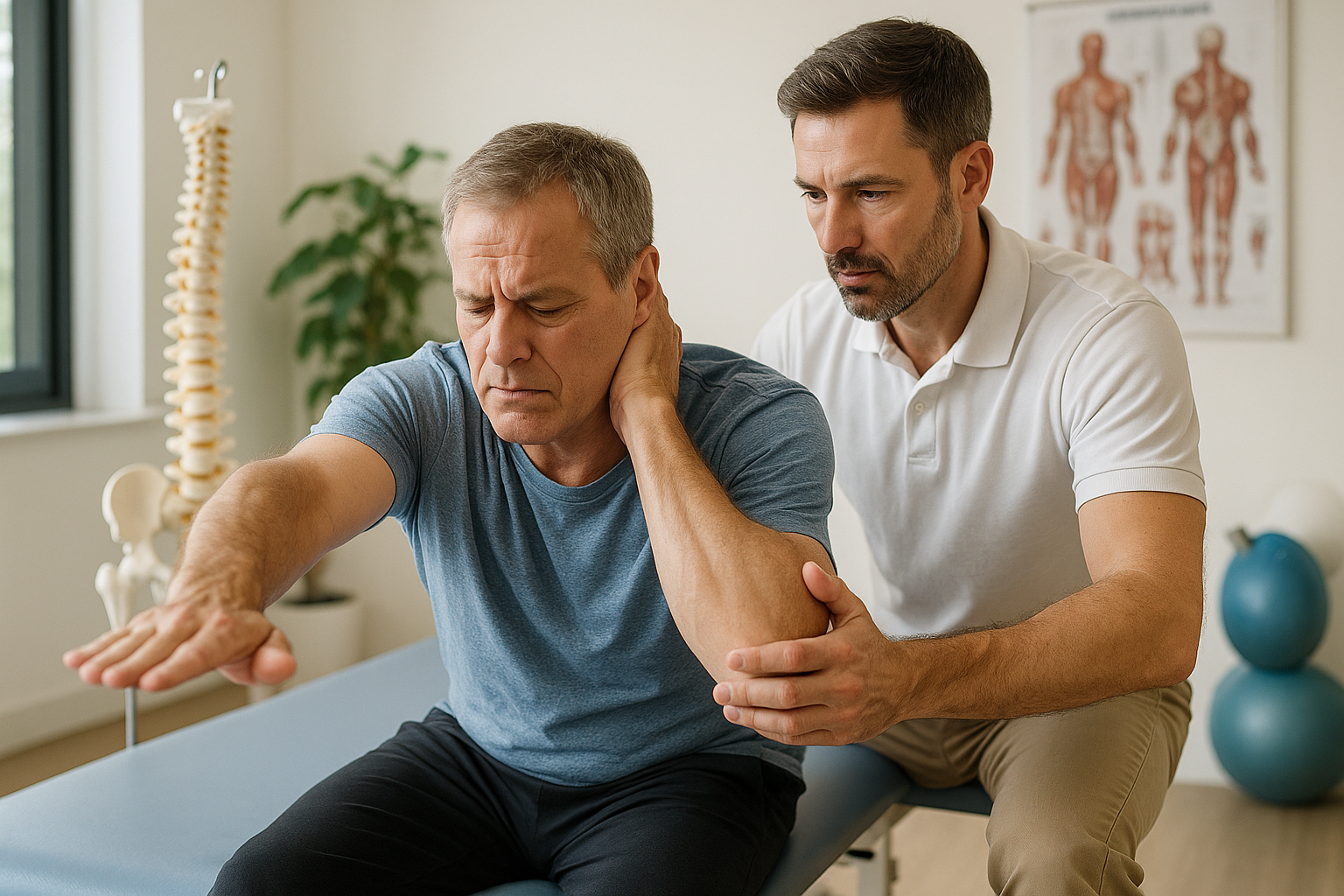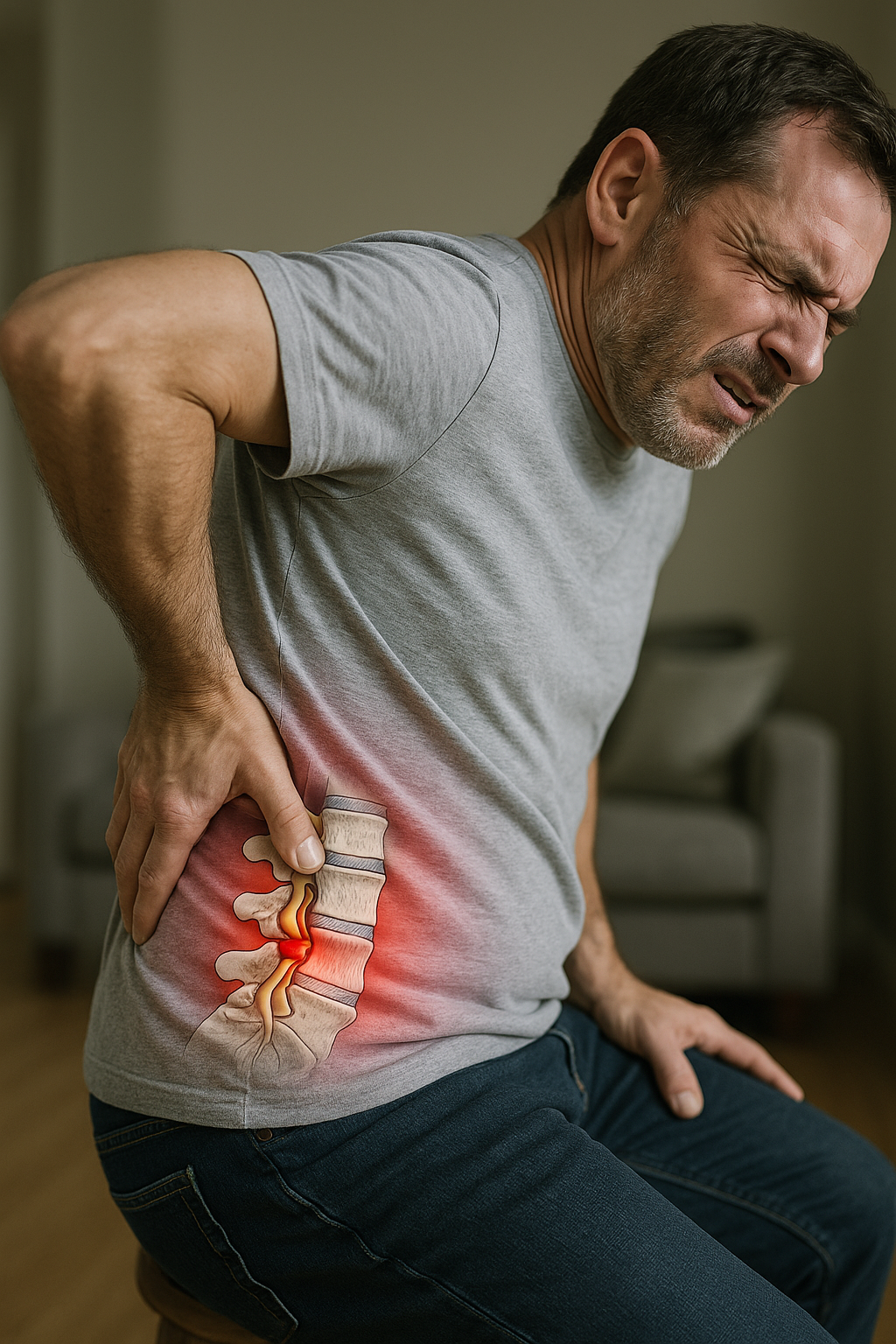Lower back strain is a common ailment that can affect anyone, from athletes to office workers. It occurs when the muscles or tendons in the lumbar region are injured, often due to heavy lifting, twisting, bending, or overuse. Understanding this condition is crucial for managing the pain and preventing future occurrences.
Understanding lower back strain
Lower back strain is characterized by an injury to the muscles or tendons in the lumbar area of the spine. This type of strain is typically the result of activities that involve heavy lifting, sudden twisting, bending, or prolonged overuse. It's a prevalent issue that can impact people of all ages and occupations, making it essential to recognize and address promptly.
One of the key reasons lower back strain is so common is because the lumbar region is responsible for supporting much of the body's weight and facilitating a wide range of movements. Consequently, it is susceptible to injury, especially when subjected to excessive stress or poor posture. While lower back strain can be painful and disruptive, self-care plays a vital role in managing symptoms and promoting recovery.
Symptoms to recognize
Recognizing the symptoms of lower back strain is the first step toward effective management. Common symptoms include pain that worsens with movement, stiffness, muscle spasms, and localized tenderness in the lower back area. These symptoms can vary in intensity, ranging from mild discomfort to severe pain that limits mobility.
Early recognition of these symptoms is crucial for effective management and recovery. Ignoring the signs of lower back strain can lead to prolonged discomfort and potentially more severe injuries. By identifying the symptoms early, individuals can take appropriate self-care measures to alleviate pain and promote healing.
In the following sections, we will explore various self-care strategies and treatments that can help individuals conquer lower back strain effectively. From immediate home care techniques to professional interventions, understanding the options available is key to managing this common issue and ensuring a speedy recovery.
Immediate home care strategies for lower back strain
When dealing with back strain in the lower back, immediate home care is crucial for alleviating pain and promoting recovery. One of the first steps is to find the right balance between rest and activity. While it is beneficial to rest for the first 24 to 48 hours to reduce pain and prevent further injury, prolonged immobility can actually delay recovery. Engaging in gentle movements as soon as the acute pain subsides can help maintain flexibility and prevent stiffness.
Cold and heat therapy are effective methods for managing lower back strain. During the initial 48 hours, applying ice packs to the affected area can help reduce swelling and inflammation. After this period, transitioning to heat therapy can promote blood flow, relieve stiffness, and aid in the healing process. Using a heating pad or warm compress for short intervals can provide significant relief.
Medications and pain relief options
Medications can play a supportive role in managing pain and inflammation associated with lower back strain. Nonsteroidal anti-inflammatory drugs (NSAIDs) such as ibuprofen or naproxen are commonly recommended for their effectiveness in reducing pain and swelling. Acetaminophen is another option for pain relief, particularly for those who cannot tolerate NSAIDs.
For persistent symptoms, topical treatments such as creams and salves can be applied directly to the affected area to provide localized relief. However, caution should be exercised with stronger medications like narcotics, as they are rarely needed and generally not recommended for lower back strain due to the risk of dependency and side effects.
Physical therapy and movement to aid recovery
Physical therapy is highly beneficial for individuals experiencing ongoing symptoms of lower back strain. A physical therapist can design a personalized exercise program to stretch and strengthen the back and abdominal muscles, which are crucial for supporting the spine and preventing future injuries. Gentle stretching exercises and light aerobic activities such as walking, swimming, or biking are encouraged to promote mobility and circulation.

Lumbar support belt
Decompresses your spine and relieves tension and pain in the lower back. Adjustable, firm support for daily activities.
In addition to traditional physical therapy, alternative therapies can also be effective in managing lower back strain. Massage therapy, including self-massage techniques using tools like tennis balls or foam rollers, can help reduce muscle tension and improve flexibility. Chiropractic care, acupuncture, and yoga are other alternative treatments that have shown promise, particularly for chronic cases of lower back strain.
Integrating self-care into your routine
Incorporating these self-care strategies into your daily routine can significantly improve your recovery from lower back strain and help prevent future occurrences. Consistency is key, and making small adjustments to your lifestyle, such as practicing good posture and engaging in regular exercise, can have a substantial impact on your overall back health.

Men's Posture Shirt™ - Black
Stimulates your muscles, improves posture, and helps relieve tension and pain. Documented effect and easy to wear all day.
While self-care is essential, it is also important to recognize when professional medical evaluation is necessary. If symptoms persist or worsen despite home care efforts, consulting a healthcare provider is advisable to rule out more serious underlying conditions and to receive tailored treatment recommendations.
Recovery expectations and prognosis for lower back strain
Recovering from lower back strain generally involves a positive prognosis, with most cases resolving within a month through conservative care. The recovery timeline can vary significantly, ranging from a few days for mild strains to several weeks for more severe injuries. It is important to maintain realistic expectations and adhere to recommended self-care strategies to facilitate the healing process. Incorporating posture improvements and habit changes into daily routines can prevent the development of chronic issues and support long-term back health.
Prevention tips to avoid lower back strain
Preventing lower back strain is crucial for maintaining a healthy spine and avoiding recurrent pain. Implementing ergonomic practices during activities such as lifting and moving can significantly reduce the risk of injury. It is essential to bend at the knees, keep the back straight, and hold objects close to the body when lifting. Regular exercise that focuses on strengthening the core and enhancing flexibility can also provide substantial support to the lumbar region.
Additionally, creating a supportive sleeping environment can play a vital role in prevention. Investing in a mattress that offers adequate support and sleeping in positions that maintain the natural curve of the spine can help alleviate stress on the lower back. By integrating these preventive measures into daily life, individuals can minimize the risk of experiencing back strain in the future.
Frequently asked questions
What causes lower back strain?
Lower back strain is commonly caused by activities that involve heavy lifting, sudden twisting, bending, or prolonged overuse. These movements can place excessive stress on the muscles and tendons in the lumbar region, leading to injury and pain.
How can I differentiate between a strain and more serious back issues?
While lower back strain typically presents with pain, stiffness, and muscle spasms, more serious back issues may include symptoms such as numbness, tingling, or weakness in the legs. If these symptoms occur, or if the pain persists beyond a few weeks, it is advisable to seek medical evaluation to rule out more serious conditions.
When should I see a doctor for lower back pain?
It is important to consult a healthcare professional if lower back pain is severe, does not improve with self-care measures, or is accompanied by symptoms such as leg weakness, loss of bladder or bowel control, or unexplained weight loss. These could be indicators of more serious underlying issues that require medical attention.
Can lower back strain become chronic?
Yes, lower back strain can become chronic if not managed properly. Factors such as poor posture, inadequate physical activity, and failure to address underlying causes can contribute to the persistence of pain. Implementing preventive strategies and seeking professional guidance can help prevent chronic issues.
Are there specific exercises to avoid with lower back strain?
When dealing with lower back strain, it is advisable to avoid exercises that place excessive strain on the lumbar region, such as heavy lifting, high-impact activities, and movements that involve twisting or bending. Instead, focus on gentle stretching and strengthening exercises that support recovery without exacerbating the condition.
Källor
- American Association of Neurological Surgeons. "Low Back Strain and Sprain."
- Shoreline Orthopaedics. "Lumbar Back Strain."
- HealthPartners. "Pulled Back Muscle: Symptoms and Treatment."
- Cleveland Clinic. "Back Strains and Sprains."
- MedlinePlus. "Low Back Pain - Acute."
- WebMD. "Low Back Strain."
- Mayo Clinic. "Back Pain: Diagnosis and Treatment."
- Healthdirect Australia. "Back Injuries."
- University of Maryland Medical System. "Spine Health: Signs and Symptoms."


















